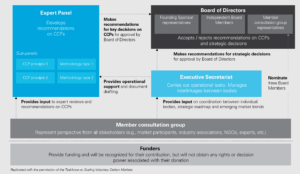How Carbon Credit Exchanges Are Generated
Carbon Credit Exchanges Are Generated
When it comes to the way carbon credit exchanges are generated, there is a lot to consider. The process can be difficult and time consuming, and many companies are under pressure to reduce their greenhouse gas emissions. But the market has begun to emerge as a useful tool for businesses to offset their environmental impacts.
To make the most of the carbon credit exchange opportunity, a voluntary carbon market must be environmentally sound, transparent and efficient. This can be done by establishing a third-party organization to oversee the marketplace. It should also include a system for monitoring and verifying projects.

In order for this to happen, an attribute taxonomy must be defined. This would allow for the classification of credits and help buyers find what they are looking for. It could also speed up the cash flow of project developers and enhance the credibility of corporate offsets.
How Carbon Credit Exchanges Are Generated
Another important aspect to consider is the level of quality. Many companies will pay a premium for credits with higher qualities. This is because it is in their best interest to minimize the cost of their emissions. In addition, consumers will want to know that they are getting a legitimate product.
One way to ensure the quality of credits is to use a registry system. This is an independent organization that maintains a central register of all registered carbon projects. They then evaluate each project for its performance annually. The organization can also monitor the credits’ value by looking at the attributes that affect their price. The organization should also be able to ensure that any credits are legally enforceable.
An independent third-party organization should also define an attribute taxonomy. This would help sellers and buyers better categorize the different attributes of carbon credits. This would also be a good way to promote liquidity on exchanges.
It’s important to recognize that the market for carbon credits is currently heterogeneous. This means that it can be difficult to determine which credits are actually able to reduce emissions. This is because of the lack of transparency and data available on the pricing of these products. It can also make it difficult for buyers to determine whether they are paying a fair price for the credits they purchase. This makes the process susceptible to fraud and money laundering.
The best counterbalance to this problem is the Clean Advancement Mechanism (CDM). This is a rule book developed by the United Nations that sets standards for future emanation targets. CDMs make it workable for companies to buy large amounts of credits. They can be used as a price-risk management mechanism or as part of a supplier financing plan.
The voluntary carbon market has taken off in recent years. This is due to the growing interest in meeting international climate goals. In particular, many large corporations have made ambitious commitments to achieve net zero carbon emissions.
The voluntary carbon market is highly fragmented and can be difficult to navigate. Buying offsets on an exchange can be quick and easy, but the process is often difficult to assess.